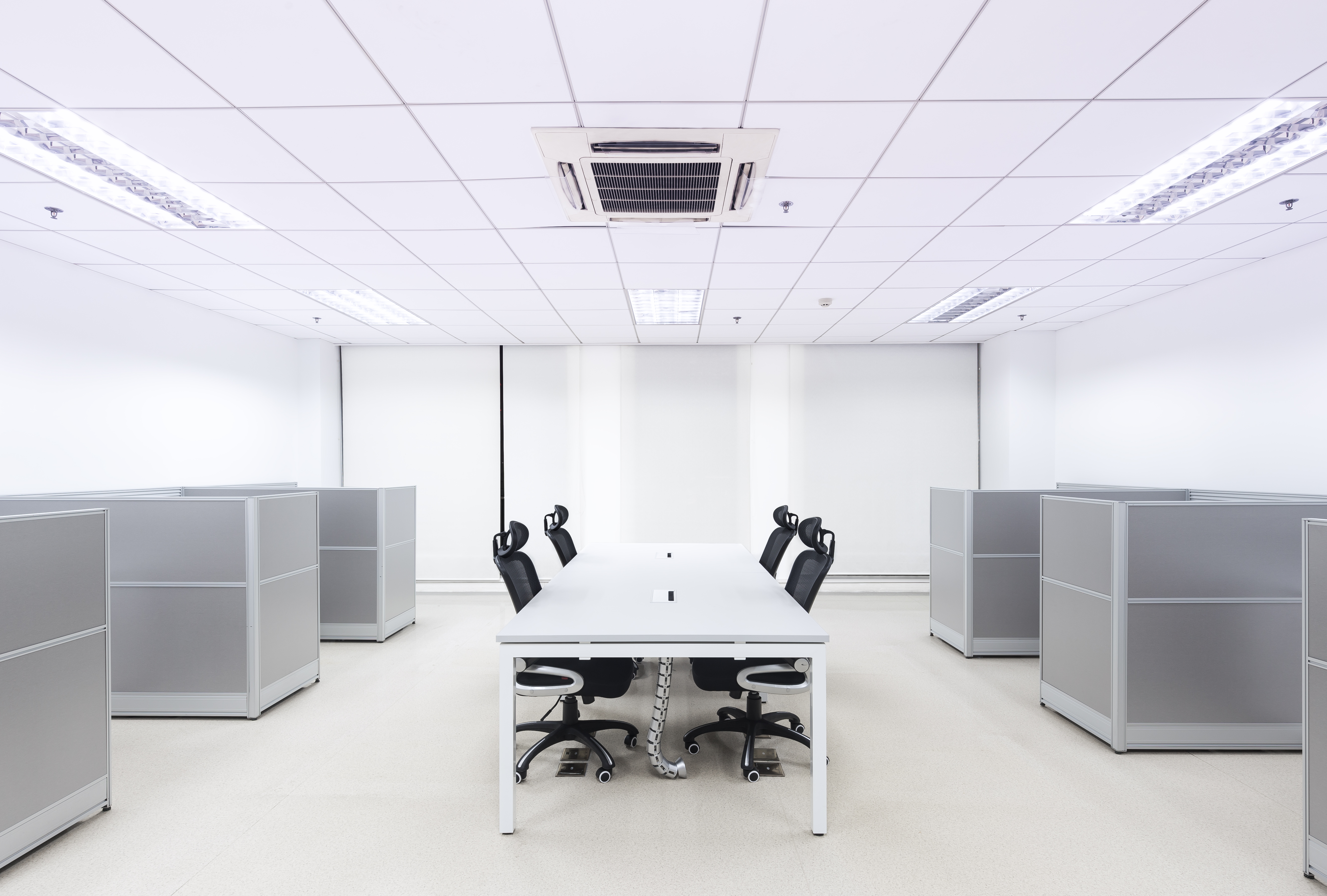Workplace air conditioning
Contents |
Introduction
The responsibilities of an employer regarding workplace temperature during summer is as important as during the warmer months. Failure to ensure a stable temperature can lead to an unproductive workforce as well as causing health issues, as a result of dehydration and other heat-related conditions.
Thermal comfort, the state of mind in terms of whether a person feels hot or cold, will also have an impact on workers' happiness. For more information, see Thermal comfort.
Workplace temperature is an important factor to monitor and manage, for both the safety and comfort of employees. Normal operating temperatures for workplace environments are vital to continued productivity.
Indoor conditions requirements
An indoor workplace requires a temperature that is regarded as ‘reasonable’. This is typically a temperature in the region of 15°C or slightly lower if there is strenuous work taking place [reference required 13 to 16°C are minimums not recommendations see Thermal_comfort_in_buildings#Regulation https://www.designingbuildings.co.uk/wiki/Thermal_comfort_in_buildings#Regulation].
Where air conditioning cannot be placed in a work environment – such as in an environment which requires a specific temperature for manufacturing processes – then fans should be used to ensure appropriate air flow. Sufficient space should also be provided to ensure freedom of movement.
Advantages and disadvantages
Many studies show that increased temperature can have a direct impact on productivity. Heat can make workers feel hot and sluggish. The warmer weather is also a disadvantage for hay fever sufferers - with running eyes and general discomfort having a direct impact on their productivity. A comprehensive air conditioning system allows for windows to remain closed throughout the summer and helps protect those suffering from the pollen of the outdoors.
As heat can increase moisture levels, which in turn leads to more mould and mildew forming. This can add to maintenance costs as well as potential respiratory issues for staff [reference required, condensation tends to form in colder, not warmer environments].
On the other hand, air conditioning can also dry out the work environment which can cause throat irritation and problems for workers who wear contact lenses. Also, extreme temperature changes from the outdoors to indoors can cause issues for workers who need to come and go frequently. Regulating the difference is important to ensure no discomfort in this situation.
Maintenance
Regular maintenance and checks are needed to ensure workplace air conditioning is working at optimal levels at all times. Like any piece of machinery, air conditioning needs to be checked and worked on to ensure performance is not affected at peak times of the year. This is done, amongst other things, to check for clogging due to dirt and debris in the filters and also changing them when necessary.
Overall, an effective and efficient workplace air conditioning system is integral; both to ensure maximum comfort and productivity in the warmer months of the year.
--Heritage Heating and Cooling 13:39, 21 Aug 2017 (BST)
Related articles on Designing Buildings Wiki
- Air conditioning.
- Air conditioning in non-domestic buildings.
- Cooling systems for buildings.
- Heating.
- Indoor environmental quality.
- Thermal comfort.
- Thermal pleasure in the built environment.
- Underfloor air conditioning at London Grade II listed landmark.
- Wellbeing and buildings.
- Workplace humidity.
Featured articles and news
International Electrician Day, 10 June 2025
Celebrating the role of electrical engineers from André-Marie Amperè, today and for the future.
New guide for clients launched at Houses of Parliament
'There has never been a more important time for clients to step up and ...ask the right questions'
The impact of recycled slate tiles
Innovation across the decades.
EPC changes for existing buildings
Changes and their context as the new RdSAP methodology comes into use from 15 June.
Skills England publishes Sector skills needs assessments
Priority areas relating to the built environment highlighted and described in brief.
BSRIA HVAC Market Watch - May 2025 Edition
Heat Pump Market Outlook: Policy, Performance & Refrigerant Trends for 2025–2028.
Committing to EDI in construction with CIOB
Built Environment professional bodies deepen commitment to EDI with two new signatories: CIAT and CICES.
Government Grenfell progress report at a glance
Line by line recomendation overview, with links to more details.
An engaging and lively review of his professional life.
Sustainable heating for listed buildings
A problem that needs to be approached intelligently.
50th Golden anniversary ECA Edmundson apprentice award
Deadline for entries has been extended to Friday 27 June, so don't miss out!
CIAT at the London Festival of Architecture
Designing for Everyone: Breaking Barriers in Inclusive Architecture.
Mixed reactions to apprenticeship and skills reform 2025
A 'welcome shift' for some and a 'backwards step' for others.
Licensing construction in the UK
As the latest report and proposal to licence builders reaches Parliament.
Building Safety Alliance golden thread guidance
Extensive excel checklist of information with guidance document freely accessible.
Fair Payment Code and other payment initiatives
For fair and late payments, need to work together to add value.
Pre-planning delivery programmes and delay penalties
Proposed for housebuilders in government reform: Speeding Up Build Out.
High street health: converting a building for healthcare uses
The benefits of health centres acting as new anchor sites in the high street.


























